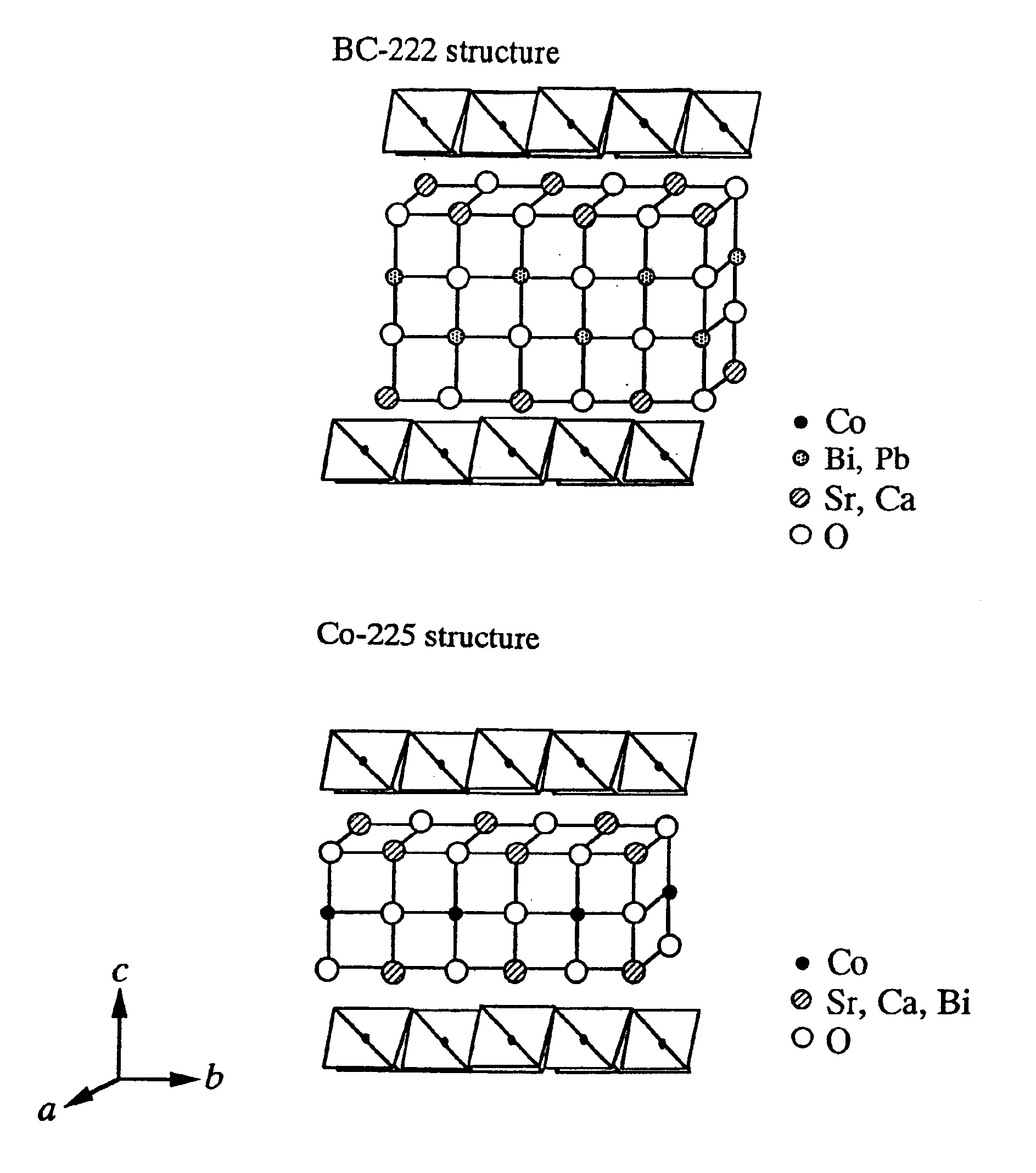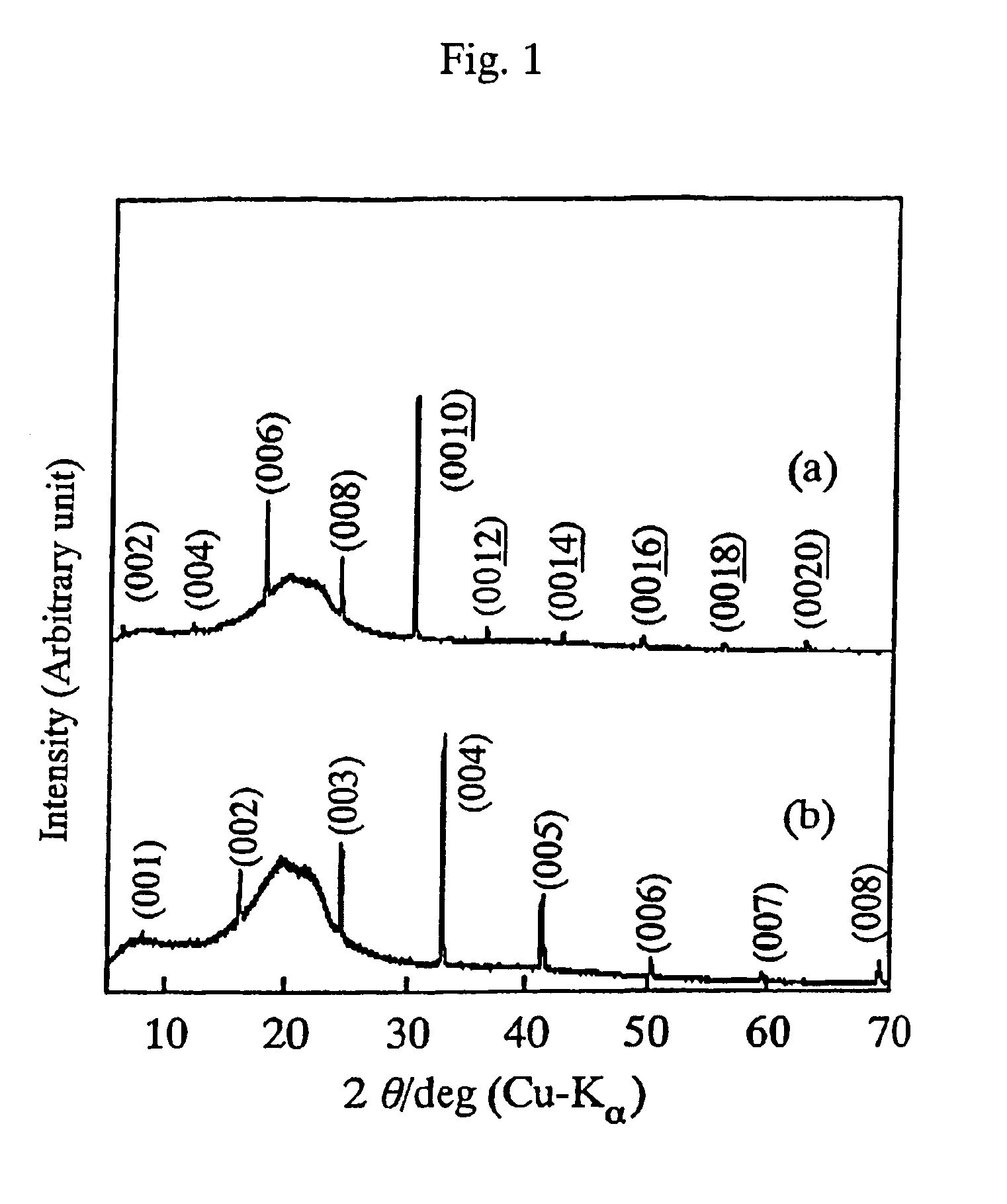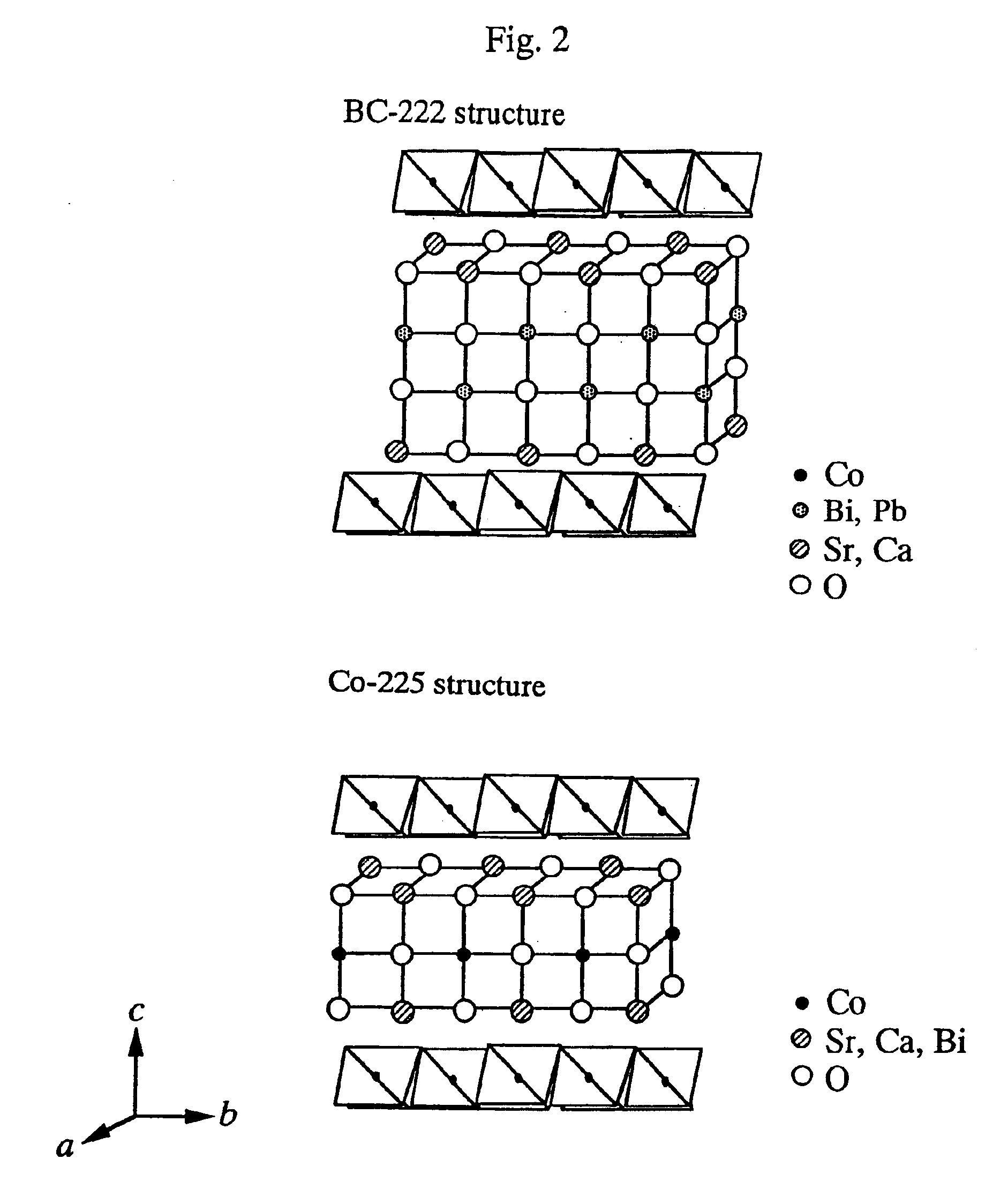Method for producing single crystal of composite oxide
- Summary
- Abstract
- Description
- Claims
- Application Information
AI Technical Summary
Benefits of technology
Problems solved by technology
Method used
Image
Examples
example 1
Bismuth oxide (Bi2O3), strontium carbonate (SrCO3), calcium carbonate (CaCO3), cobalt oxide (CO3O4), and tellurium oxide (TeO2) were selected as the Bi source, Sr source, Ca source, Co source, and Te source, respectively, and these raw substances were thoroughly mixed at a Bi / Sr / Ca / Co / Te atomic ratio of 2 / 2 / 2 / 2 / 0.5. The mixture was charged into an alumina crucible, and then calcined in air using an electric furnace at 800° C. for 10 hours.
Subsequently, the obtained calcined product was crushed and then shaped under pressure. Thereafter, the formed product was heated in air at 840° C. for 20 hours to give a crystalline product. This product was heated in an oxygen stream (150 ml / min) at 920° C. for 100 hours, whereby a fibrous single crystal of composite oxide was grown on the surface of the sintered product.
FIG. 3 is a scanning electron micrograph of the obtained composite oxide single crystal. As is clear from FIG. 3, the composite oxide single crystal produced by the method of the...
examples 2 to 25
In each of these examples, starting materials were mixed at the ratios shown in the column titled “Starting composition” in Tables 1 and 2, and a composite oxide single crystal was prepared in the same manner as in Example 1. That is, the mixture of starting materials were calcined and crashed, followed by preparation of a crystalline product. Subsequently, the crystalline product was heated under the heat treatment temperature, heat treatment time length and oxygen flow conditions specified in Tables 1 and 2, thereby growing a composite oxide single crystal on the surface of the sintered product.
Tables 1 and 2 also show the average composition, the electrical resistivity at 973K, and the Seebeck coefficient at 973K for each of the obtained single crystals. The composite oxide single crystals obtained in Examples 1 to 14 has a laminated structure in which two types of layers alternate in the direction of the c-axis. One type is a CoO2 layer wherein unit cells, in each of which six o...
PUM
 Login to View More
Login to View More Abstract
Description
Claims
Application Information
 Login to View More
Login to View More - R&D
- Intellectual Property
- Life Sciences
- Materials
- Tech Scout
- Unparalleled Data Quality
- Higher Quality Content
- 60% Fewer Hallucinations
Browse by: Latest US Patents, China's latest patents, Technical Efficacy Thesaurus, Application Domain, Technology Topic, Popular Technical Reports.
© 2025 PatSnap. All rights reserved.Legal|Privacy policy|Modern Slavery Act Transparency Statement|Sitemap|About US| Contact US: help@patsnap.com



